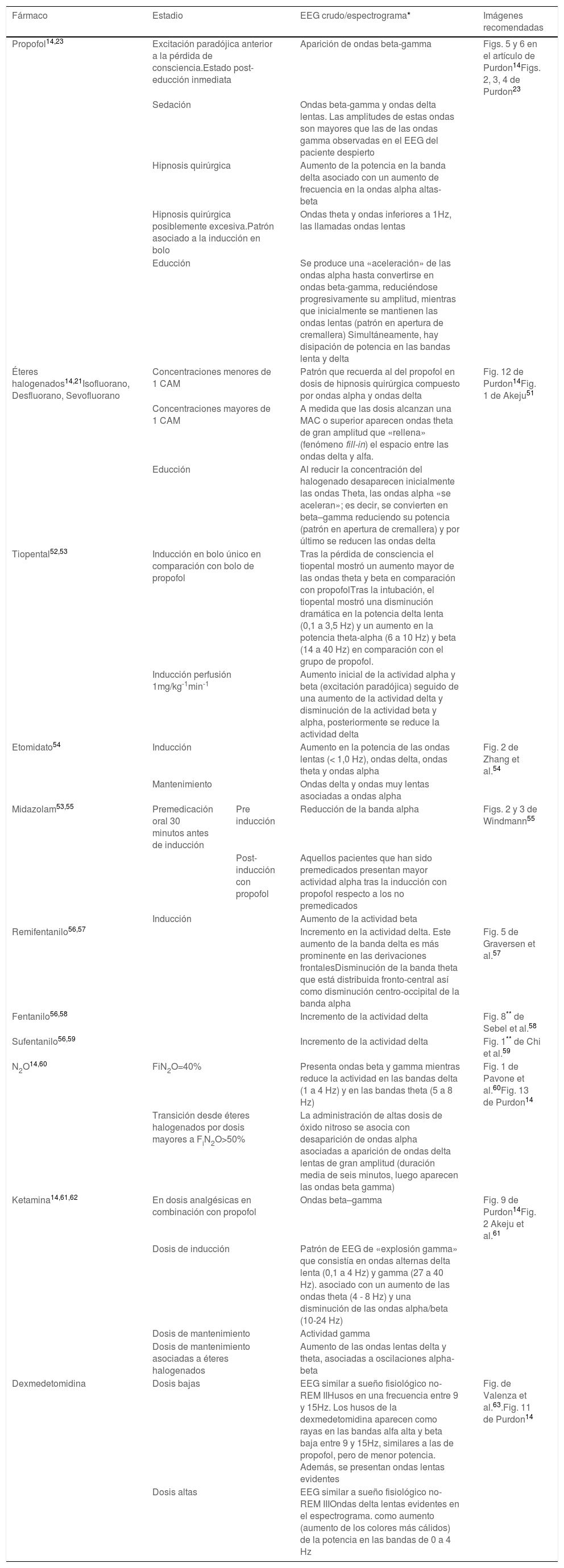
Las redes neurales que integran el funcionamiento del sistema nervioso central poseen tres posibles estados naturales: vigilia, sueño REM y sueño no-REM. El 16 de octubre de 1846 fue inducido, de forma artificial, un nuevo estado cerebral que posteriormente recibiría el nombre de anestesia. La monitorización de este nuevo estado se basó principalmente en signos clínicos hasta el último lustro del siglo pasado, a pesar de que ya en 1937, Gibbs y Lennox recomendaron el uso rutinario del electroencefalograma (EEG) para este fin.
En 1996, la US Food and Drug Administration (FDA) aprobó el índice biespectral (un parámetro adimensional calculado a partir del EEG usando algoritmos sometidos a derechos de autor y a patente comercial). Este índice permitió por primera vez «cuantificar» la hipnosis durante la anestesia de un modo sencillo, basándose en el EEG. Posteriormente, distintas firmas comerciales han desarrollado otros «hipnómetros».
En la primera década de nuestro siglo, la monitorización del estado anestésico se ha centrado en el uso del espectrograma y del EEG convencional, no solo como hipnómetros, sino como monitores del estado cerebral. En 2020, la PeriOperative Quality Initiative recomendó la incorporación del EEG como una monitorización fundamental y necesidad de la formación de los anestesiólogos en la interpretación del EEG, tanto en su forma convencional como del espectrograma. Algunos monitores de los que disponemos en la clínica diaria cuentan con EEG convencional, espectrogramas y distintos parámetros del análisis espectral del EEG. Solo debemos aprender a interpretarlos.
The neural networks of the central nervous system have three possible natural states: wakefulness, REM sleep and Non-REM sleep. On 16 October 1846, a new brain state was artificially induced, which later became known as anaesthesia. Until 1995, this new state was mainly monitored using clinical signs, although as early as 1937 Gibbs and Lennox recommended the routine use of electroencephalogram (EEG) for this purpose.
In 1996, the US Food and Drug Administration (FDA) approved the bispectral index (a dimensionless parameter calculated from the EEG using copyrighted, patented algorithms). This index made it possible for the first time to “quantify” hypnosis during anaesthesia in a simple way based on EEG. Subsequently, other “hypnometers” have been developed by different commercial firms.
In the first decade of this century, anaesthesia monitoring has focused on the use of the spectrogram and conventional EEG, not only as hypnometers, but also as brain state monitors. In 2020, the PeriOperative Quality Initiative called for the EEG to be considered a fundamental monitoring tool, and recommended that anaesthesiologists be trained in the interpretation of EEG, both in its conventional form and as a spectrogram. Some monitors available in daily clinical practice display conventional EEG, spectrograms, and different parameters of EEG spectral analysis. We just have to learn how to interpret them.
Artículo
Comprando el artículo el PDF del mismo podrá ser descargado
Precio 19,34 €
Comprar ahora










